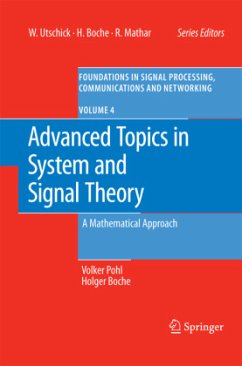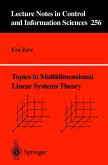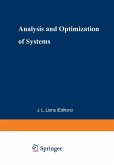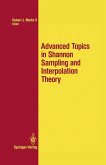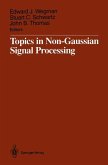The requirement of causality in system theory is inevitably accompanied by the appearance of certain mathematical operations, namely the Riesz proj- tion,theHilberttransform,andthespectralfactorizationmapping.Aclassical exampleillustratingthisisthedeterminationoftheso-calledWiener?lter(the linear, minimum means square error estimation ?lter for stationary stochastic sequences [88]). If the ?lter is not required to be causal, the transfer function of the Wiener ?lter is simply given by H(?)=? (?)/? (?),where ? (?) xy xx xx and ? (?) are certain given functions. However, if one requires that the - xy timation ?lter is causal, the transfer function of the optimal ?lter is given by 1 ? (?) xy H(?)= P ,?? (??,?] . + [? ] (?) [? ] (?) xx + xx? Here [? ] and [? ] represent the so called spectral factors of ? ,and xx + xx? xx P is the so called Riesz projection. Thus, compared to the non-causal ?lter, + two additional operations are necessary for the determination of the causal ?lter, namely the spectral factorization mapping ? ? ([? ] ,[? ] ),and xx xx + xx? the Riesz projection P .
From the reviews: "It is intended primarily for engineers working in the area of robustness problems under a casualty constraint. At the beginning it presents the mathematical methods, necessary to approaching theses problems. Then, some related classical results concerning the boundedness and continuity of the Hilbert transform and Riesz projection are presented. Finally, these methods and results are applied to selected topics from signal processing." (Tzvetan Semerdjiev, Zentralblatt MATH, Vol. 1179, 2010) "The monograph gives an elaborate treatment of some tools used in signal and system theory, which have applications in communications, stochastic processes and optimal filter theory. ... Appropriate references are provided for the reader interested in details. ... The book is a valuable addition to the mathematical literature related to signal processing, and should be useful to students in engineering as well as to mathematicians interested in applications." (Amol J. Sasane, Mathematical Reviews, Issue 2010 j)

